"Boudi why this name Bou Khuda?" Rosie asked while posing as my hand model. I was clicking a bowl full of Boua Pulao and Rosie was helping me out as my beloved hand model. Without giving me the time to answer she asked again; "I understand why you love clicking Pasta's hand while capturing the food but why me?"
Rosie is my daughter's nanny. She stays with us.
I was about to describe Bou Khuda but decided to address her second question first. "You know Rosie you are my favorite hand model apart from Pasta. I love the way you pose with the food. You are so very natural; and simple and humble too. You are like the Bou Khudi Pulao we are clicking now. Humble yet unignorable and required. To answer your second question; Bou Khuda is nothing but Pulao cooked with Khud aka broken Rice. Bou stands for Daughter in law while Khuda is having a double meaning. Khuda can be hunger or it can be Khud or broken rice. In a way, both the meaning are equally apt for this pseudo pulao." I replied with a smile and hopefully was able to address my daughter's Rosie didi.
Bou Khuda!
Bou Khuda is not something I have grown up eating with. Khud was not at all regular at home. A Pulao prepared with the discarded (almost) portion of rice along with the leftover or easily available veggies; Bou Khuda is, however, a popular dish in Bangladesh. I have my roots in India (read I am a Ghoti) and what we had while growing up was "Jemon Temon Pulao" or "Bhat Bhaja" but not Bou Khuda.
I remember having Bou Khuda for the first time at my cousin's place cooked by her mother-in-law years back. A humble portion of savory pulao prepared with broken rice and aloo bhaja and the unmistakable smell of Ghee. It was new to me. Comforting to the core, I must admit. While asked she shared the reality with a smile on her face; probably remembering the country she left years back.
"You know it is fun watching the young generation purchasing mini Moghra or broken rice these days. Broken rice was not something matriarchs used to cook for the entire family but for themselves only. Nothing was to discard; not even the Khud! It was their Mantra and probably the hard reality of life when resources were limited!" I remember her muttering.
A pulao cooked with rice discard
I then found the reference of Bou Khuda in an age-old Bengali recipe book. This pulao is also known as Boua or Bou Khudi or Khuder Polao. In Bangladesh, they serve it with different types of Bhorta. I make it quite often at home. In fact, both Pasta and Mehebub love this light Pulao prepared with Aloo Bhaja. Khud is not easily available in Kolkata these days and that is why I make this with broken rice. At times I soak normal rice (Gobindobhog or Tulaipanji) in water and then crumble it a bit to make Bou Khuda.
Blog to plate pop-up
This humble pulao is well-adored by my family and probably that is the reason I have included this as part of my upcoming pop-up. I am hosting my first pop up with Madhushree on 16th December, 18 which we have named Blog to Plate with Madhushree and Debjani. We aim to come up with a series of pop up under the umbrella of "blog to the plate".
Madhushree di is not only a good friend but also a great cook and a famous recipe blogger based out of Kolkata. It is been long we both are cooking and writing on our respective food blogs; Debjanir Rannaghar and Pikturenama but this is for the first time we are coming up with the dishes which are there on our blogs. The Version one is all about Bengali food. You may check the menu below and if you are reading this post now and have time you can book your seat using this link: https://imojo.in/5scj0c.
We have tried to balance the menu with famous as well as lost Bengali recipes from both India and Bangladesh. In addition to that; we are coming up with some of the humble Bengali offerings prepared with the less-valuable or discarded food items such as broken rice or veg peels. Here is what you can expect from our very first pop up.
Coming back to Bou Khuda; the dish calls for Khud or broken rice. I prefer to use ghee while making it and also mustard oil. You can obviously replace Ghee with Oil. Apart from that, you may use any veggie available at home to make it, however; I prefer to add fried potatoes (aloo bhaja) as well as a few seasonal veggies. apart from that little onion and very few spices are needed to make this dish.
Here's how I make Bou Khuda at Debjanir Rannaghar:
PrintRecipe Card
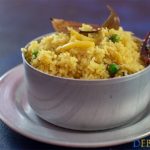
Bou Khuda (Boua Pulao or Bou Khudi)
- Total Time: 0 hours
- Yield: 4 Portions 1x
- Diet: Vegetarian
Description
Bou Khuda is a Bengali style savory pulao prepared with broken rice aka Khud
Ingredients
- Broken Rice/ Khud: 250g
- Potato: 2
- Green Peas: ½ cup
- Green Chilli: 3
- Garlic Paste: ½ Tsp.
- Mustard Oil: 3 Tbsp.
- Ghee: 1 Tbsp.
- Sugar: 1 Tsp.
- Salt: ⅔ Tsp.
Tempering:
- Bay leaf: 1
- Dry Red chili: 1
- Cinnamon Stick: 1"
Instructions
Bou Khuda Recipe

- Soak broken rice in water for 15 minutes.
- Peel the potato skin and cut it into matchstick-like pieces.
- Soak the potatoes in water as well.
- Chop Onion roughly.
- Now heat oil in a deep bottom pan and fry the potatoes in medium flame.
- Strain fried potatoes from oil.
- Temper remaining oil with Bay leaf, Dry Red Chili, and Cinamon stick.
- Add chopped onion and fry till it turns light pink in color.
- Now add garlic paste, green peas, and also green chilies and cook over low flame till the raw aroma of garlic goes away.
- At this point discard the water and add soaked rice to the pan and fry for five minutes over the low flame.
- Add salt and also sugar and mix lightly.
- Pour boiling water over the rice. The water must cover the rice and the water must reach 1" above the rice as shown in the picture.
- Lightly mix and cover the pan with a lid and cook over low flame for 7-8 minutes.
- Open the lid and check in between.
- Once the water evaporated completely add fried potatoes and lightly mix.
- Now add ghee and mix it.
- Switch the flame off and serve Bou Khuda hot.
- I prefer to add a handful of cashew nuts which is completely optional.
Notes
- If Khud not available use normal broken rice.
- Ghee is optional and so are nuts.
- I add only Potatoes and peas; you may, however, use whichever vegetables available.
- Prep Time: 10 min
- Cook Time: 20 in
- Category: Main
- Method: cooking
- Cuisine: Bengali
Nutrition
- Serving Size: 60g
- Calories: 302
- Sugar: 2.9g
- Sodium: 396mg
- Fat: 14.1g
- Saturated Fat: 3.3g
- Carbohydrates: 39.8g
- Fiber: 3.9g
- Protein: 4.8g
- Cholesterol: 8mg
Rice recipes from Debjanir Rannaghar:
- Awadhi Vegetable Tehri (Also known as Veg Tehri)
- Bhat Bhaja (also known as Bengali Bhaja Bhat)
- Bangladeshi Mutton Tehari (Also known as Gosht Tehari)
- Bou Khuda (also known as Boua Pulao or Bou Khudi)
- Bengali Niramish Khichuri (also known as Bhoger Khichuri aka Bengali Khichuri)
- Murgi Khichuri (also known as Murgir Mangshor Khichuri
- Ilish Pulao (Also known as Bengali Hilsa Pulao Recipe)
- Masoor Daler Patla Khichuri (also known as Bengali Masoor Dal khichuri)
- Peas Pulao (Also known as Matar Pulao)
- Red Lentil Khichdi)
- Ghee Bhat (Also known as Bengali Sweet Pulao)
- Khejur Gurer Payesh (also known as Bengali Rice Kheer with Date Palm Jaggery)
- Niramish Bhuni Khichuri (also know as Bengali Bhuni Khichuri)
- Muri Ghonto (Also known as Bengali Fish Head and Rice Mishmash)
- Pish-Pash (Also known as Indian Rice and Chicken Hotchpotch)
- Kolkata Mutton Biryani (Also known as Calcutta Biryani)
- Chaler Payesh (Also known as Bengali Rice Kheer)
- Dhakai Morog Pulao (also known as Sahi Morog Pulao)
- Kolkata Mutton Biryani (also known as Calcutta Biryani)
- Birista Pulao (Also known as Piyaz Beresta Pulao)
- Masoor Daler Patla Khichuri (Also known as Bengali
- Crab Biryani (Also known as Crab Dum Biryani or Nandu Biryani)
Have you tried the Bou Khuda recipe from Debjanir Rannaghar!
Do let me know how it came out. Also, I would love to see a picture of the same which you can share here on dolonchttrj@gmail.com. Meanwhile, on Instagram, you can use my hashtag #debjanirrannaghar and in addition, you can tag me at @foodofdebjani.
You can follow me on Facebook, Twitter, Pinterest and Instagram for updates and recipes from Debjanir Rannaghar.

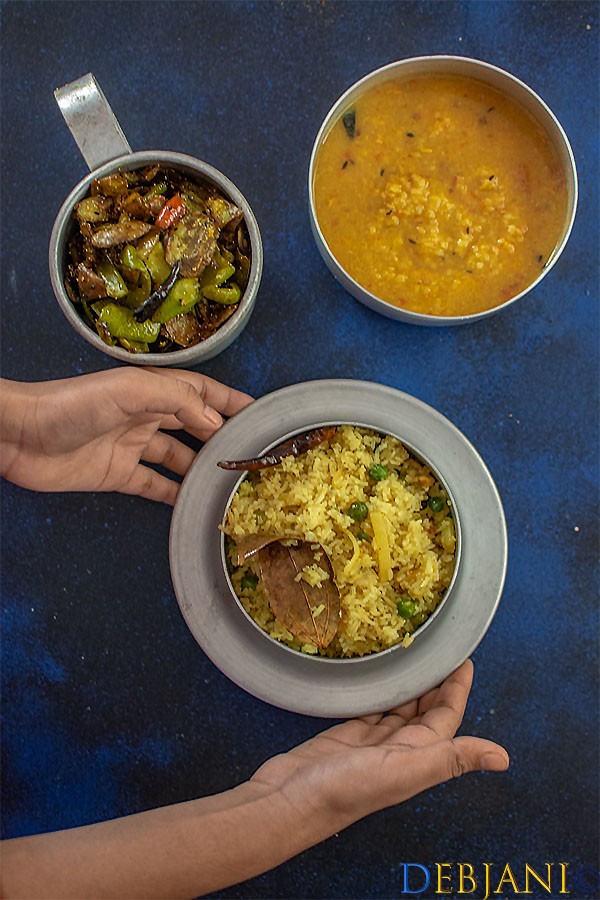
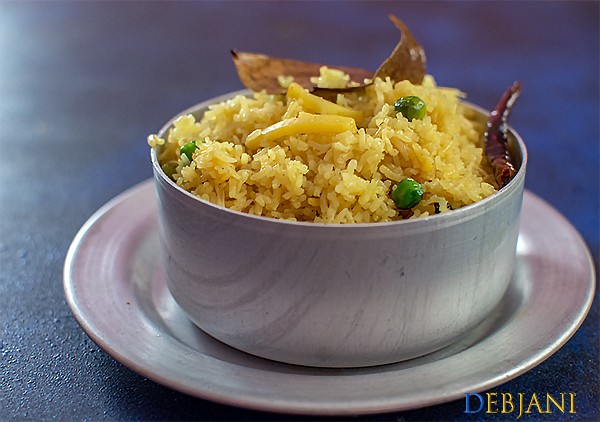
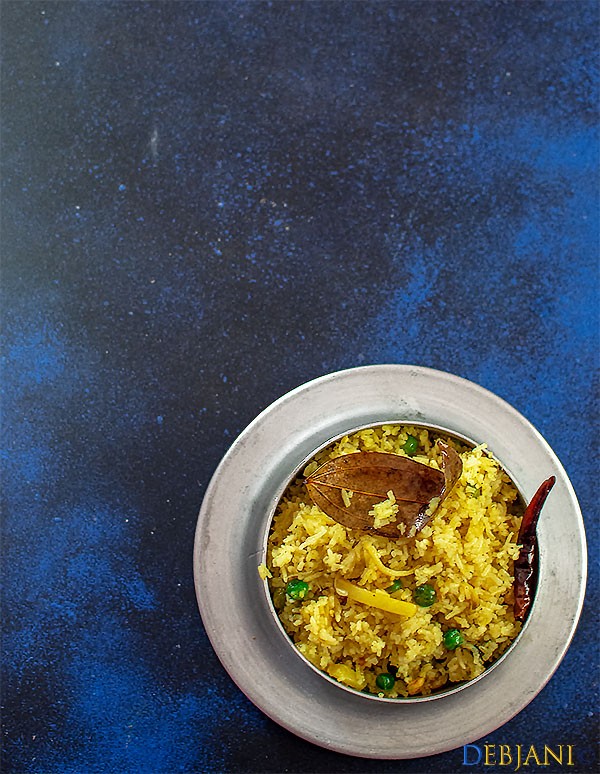
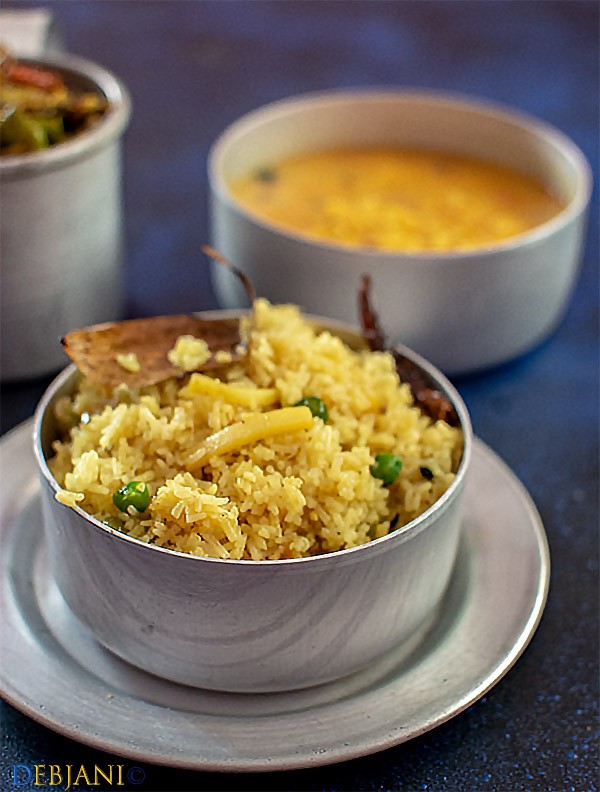
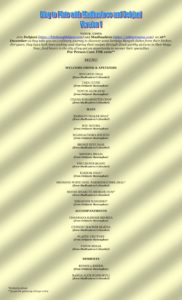
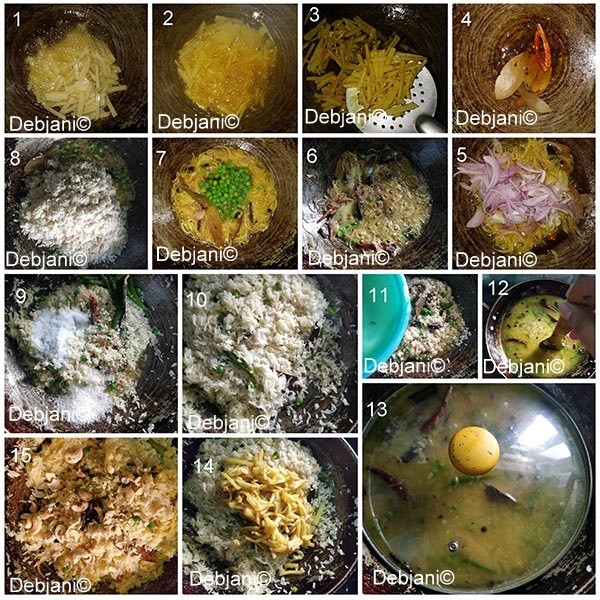

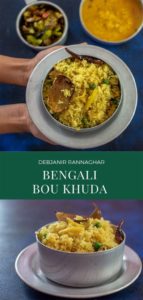


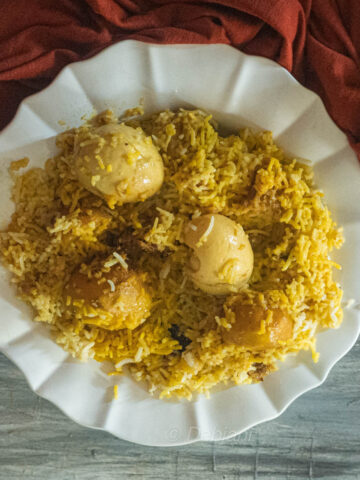
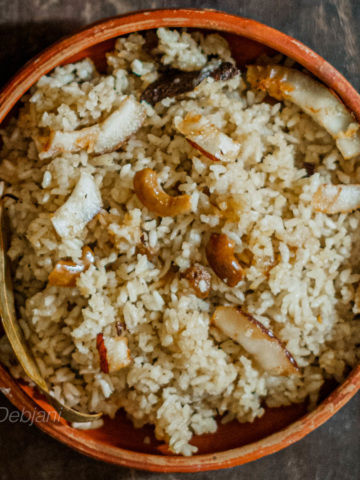
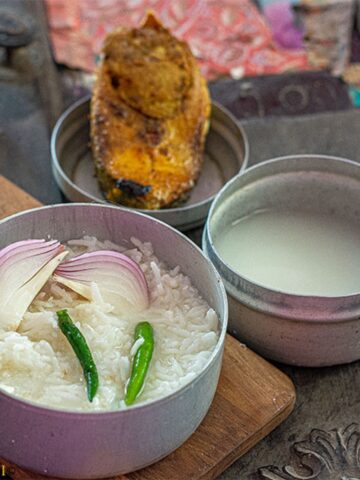
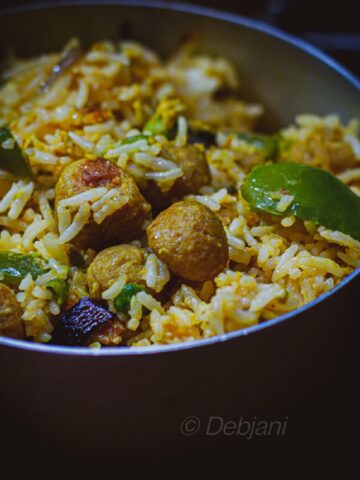
Leave a Reply